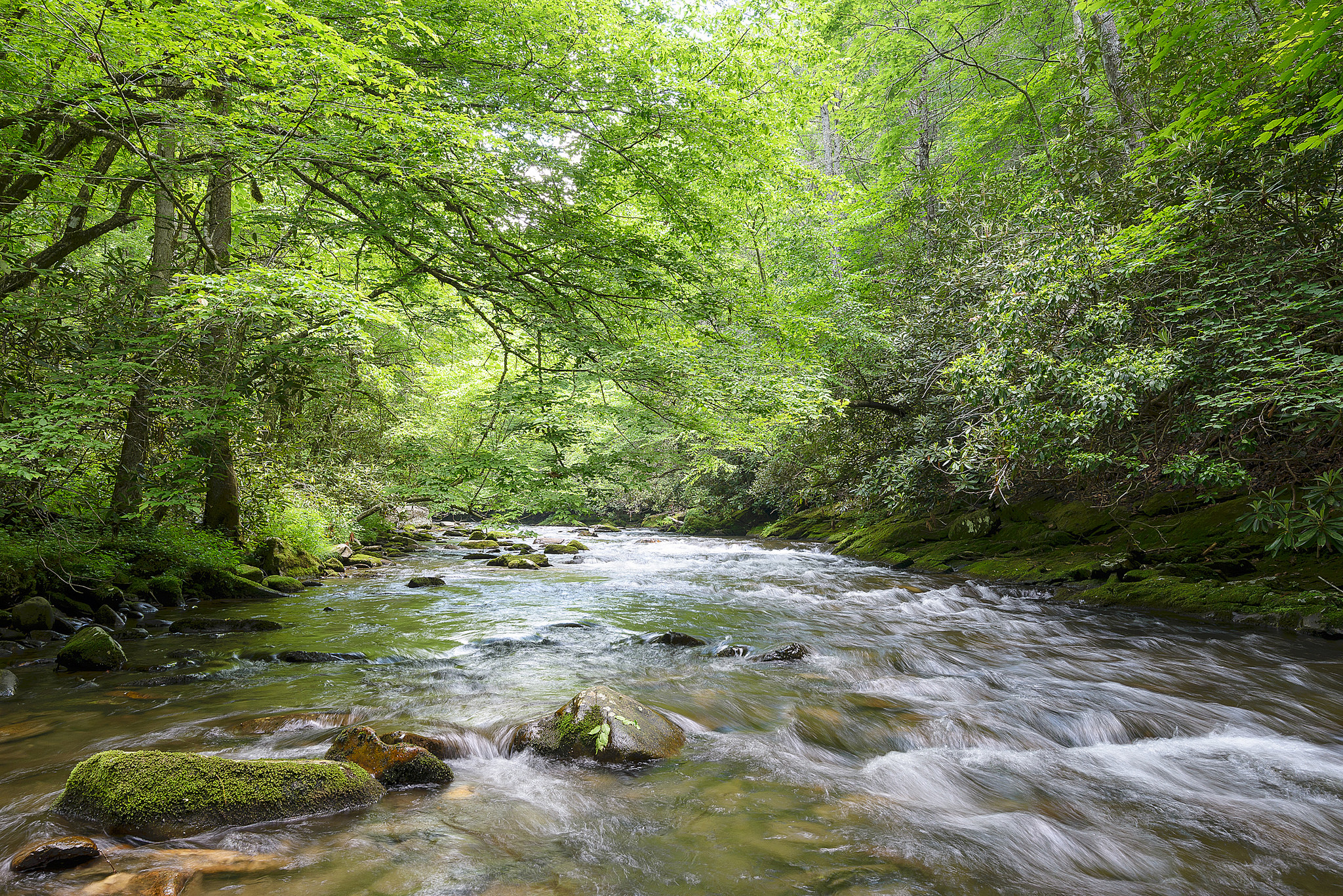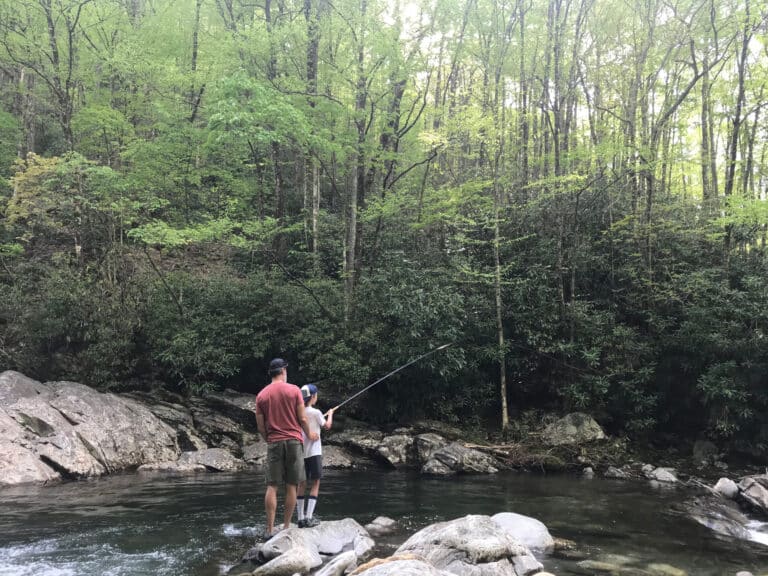On the side of a can of Pisgah Brewing Company’s (excellent) Pisgah Pale Ale or Greybeard IPA is the quotation “We all drink downstream.” Though printed on the side of a beer can, this sentence captures the essence of the broader argument that living organisms are highly affected by activities upstream—and essentially all of us live downstream.
Let me get directly to the point of this post: Our nation’s waterways are once again under attack, an attack which began the afternoon of January 20, 2017, the day Donald Trump was inaugurated as President. His public statements in support of clean air and clean water contrast sharply with his executive actions and budget proposals. He said the following when addressing Congress on February 28, 2017: “My administration wants to work with members in both parties … to promote clean air and clean water.” Nothing could be further from the truth.
Mr. Trump quickly signed into law H.J.Res.38 “Disapproving the rule submitted by the Department of Interior known as the Stream Protection Rule,” submitted to him by Congress on February 16, 2017. The Stream Protection Rule, finalized in the waning days of the Obama Administration, made it nearly impossible for companies to legally remove mountaintops to remove coal, and then fill the once-pristine, adjacent headwater streams with “overburden.” This action was low-hanging-fruit for anti-environment, pro-business members of Congress and the President, as the rule was legally reviewable by Congress under the Congressional Review Act. The Stream Protection Rule is dead.
But Mr. Trump is not satisfied to stop there, as his administration has set its sights on the broader Clean Water Rule, which was finalized on June 29, 2015 under President Obama. The title of the President Trump’s executive order, signed the same day as the address to Congress, says much: “Presidential Executive Order on Restoring the Rule of Law, Federalism, and Economic Growth by Reviewing the ‘Waters of the United States’ Rule.” This executive order directs the administrator of the EPA (climate-change denier Scott Pruitt) and the Assistant Secretary of the Army for Civil Works (currently Douglas Lamont) to review and then rescind or revise the rule.
Mr. Pruitt and Mr. Lamont wasted no time in signaling their intent in the Federal Register. Their intention is to interpret “navigable waters,” a crucial phrase which appears in the landmark Clean Water Act of 1972, as narrowly as possible—in fact, consistent with the interpretation of uber-conservative Justice Scalia in the 2006 U.S. Supreme Court ruling Rapanos vs. United States. Rapanos was argued many years after Michigan-based developer John Rapanos filled 22 acres of wetlands with sand to develop a mall, and he did not apply for a permit for this action, even though his consultant and state employees requested that he do so, claiming that the wetlands were far enough from “navigable waters” that he could do whatever he wanted.
The intention filed by Mr. Pruitt and Mr. Lamont in the Federal Register states “… the agencies will consider interpreting the term ‘navigable waters,’ as defined in the CWA in a manner consistent with the opinion of Justice Scalia in Rapanos.” Justice Scalia wrote this in his opinion on the case: “In applying the definition to “ephemeral streams,” “wet meadows,” storm sewers and culverts, “directional sheet flow during storm events,” drain tiles, man-made drainage ditches, and dry arroyos in the middle of the desert, the Corps has stretched the term “waters of the United States” beyond parody.” Parody, as in funny, an exaggeration. Justice Scalia thought it was humorous that one could consider all waters as connected and worthy of federal protection.
I could go on for pages with the details, but I will cut to the chase: After the 2006 Rapanos ruling, which did not clarify exactly which waters are protected under the Clean Water Act, the EPA began the years-long process of studying the science related to “connectivity of streams and wetlands to downstream waters,” the title of its 2015 report. It took four years to even finalize the report, owing to the extensive review by dozens of both governmental and non-governmental subject matter experts (a.k.a. scientists). Over 1,200 publications from the peer-reviewed journal literature were used in the writing of the report. Bottom line: The extensive study is scientifically-based, not whimsical. Next bottom line: Mr. Trump’s and Mr. Pruitt’s/Mr. Lamont’s intentions are whimsical, at least from a scientific perspective. In fact, Mr. Pruitt and Mr. Lamont write in the Federal Register “such a revised decision need not be based upon a change of facts of circumstances.” (emphasis mine)
The science report “Connectivity of Streams and Wetlands to Downstream Waters: A Review and Synthesis of the Scientific Evidence” is almost 500 pages long, but the conclusions are clear—all streams, wetlands, and open waters of any kind, size, and frequency of flow are intimately “connected to downstream waters and strongly influence their function” and/or “provide physical, chemical, and biological functions that could affect the integrity of downstream waters.” The subsequent Clean Water Rule, then, defines “navigable waters” very broadly, given these unequivocal findings of professional scientists in the field (again, both governmental and non-governmental). [Read a summary of the “Connectivity” report here.]
Back to my opening line—We all drink downstream. Clean water is crucial to all living organisms. And clean water is paramount for the readers of this magazine to do all the wonderful activities we do outside. The incredible efforts of scientists, lawmakers, and federal employees have made universal (at least in the U.S.) clean water even more attainable, but these efforts are being undermined by an Administration hell-bent on moving the needle in the opposite direction, towards a handful of companies and landowners.
We don’t have to take this sitting down. The EPA and Army Corps of Engineers, under new leadership, will not effortlessly undo the Clean Water Rule, as it took years to create and will take years to undo, with long court battles undoubtedly forthcoming. But we can resist as individuals, too. A simple action is to do what Mr. Pruitt and Mr. Lamont state in the Federal Register: “For further information, contact …” Let’s ask for further information. Let’s unite, regardless of political leanings and affiliation, to demand an explanation as to why the current Administration desires, openly, to roll back environmental protections of waterways and those of us who live, drink, work, and play downstream.
Here are the contacts. Please take five minutes to make the call and send an email. And then send these along to all your friends. After all, we all drink downstream.
EPA: (202) 566-2428 / [email protected]
Asst. Secretary of the Army for Civil Works:
(703) 695-4641 / email: [email protected]








